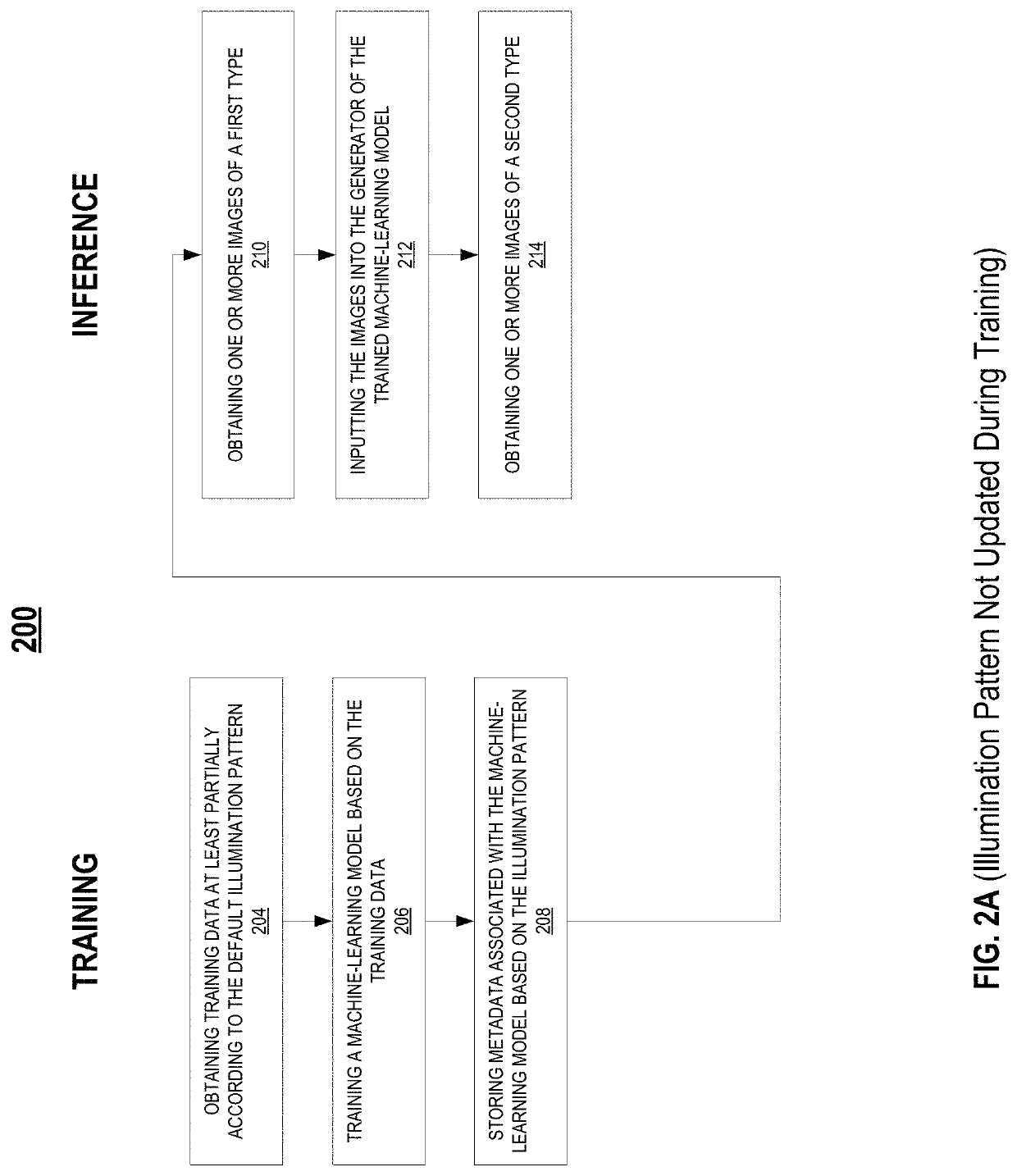Biological image transformation using machine-learning models
a machine learning and image technology, applied in image enhancement, diagnostic recording/measuring, instruments, etc., can solve the problems of inability to perform many downstream analyses, inconvenient to obtain fluorescence images, and lack of rich visual details in low-contrast images
- Summary
- Abstract
- Description
- Claims
- Application Information
AI Technical Summary
Benefits of technology
Problems solved by technology
Method used
Image
Examples
Embodiment Construction
[0223]The present disclosure includes methods, systems, electronic devices, non-transitory storage media, and apparatuses for performing ML-based generation of image data at scale. The generated image data (e.g., image data of biological samples) can provide sufficient richness and depth for downstream processing (e.g., phenotyping). Further, embodiments of the present disclosure comprises a set of computational and hardware optimization methods that extends the current dimensionality of classic microscopy techniques.
[0224]Embodiments of the present disclosure can process multiple bright-field images of biological samples and produce enhanced images of the biological samples. The enhanced images include but are not limited to: fluorescence images, phase shift images, semantic map, polarization map, refractive map (2D and 3D), absorbance map, and other image modalities. Bright-field images of biological samples can be obtained at scale and at low cost due to inexpensive equipment (e....
PUM
 Login to View More
Login to View More Abstract
Description
Claims
Application Information
 Login to View More
Login to View More - R&D
- Intellectual Property
- Life Sciences
- Materials
- Tech Scout
- Unparalleled Data Quality
- Higher Quality Content
- 60% Fewer Hallucinations
Browse by: Latest US Patents, China's latest patents, Technical Efficacy Thesaurus, Application Domain, Technology Topic, Popular Technical Reports.
© 2025 PatSnap. All rights reserved.Legal|Privacy policy|Modern Slavery Act Transparency Statement|Sitemap|About US| Contact US: help@patsnap.com



